Growing Beauty: How Farmscape Designs Cut Flower Gardens for Form & Function
When most people think of a Farmscape, they picture rows of vegetables, herbs, and fruit trees. But one of the most vibrant, rewarding additions we offer—whether in a small backyard or a sprawling agrihood—is the cut flower garden.
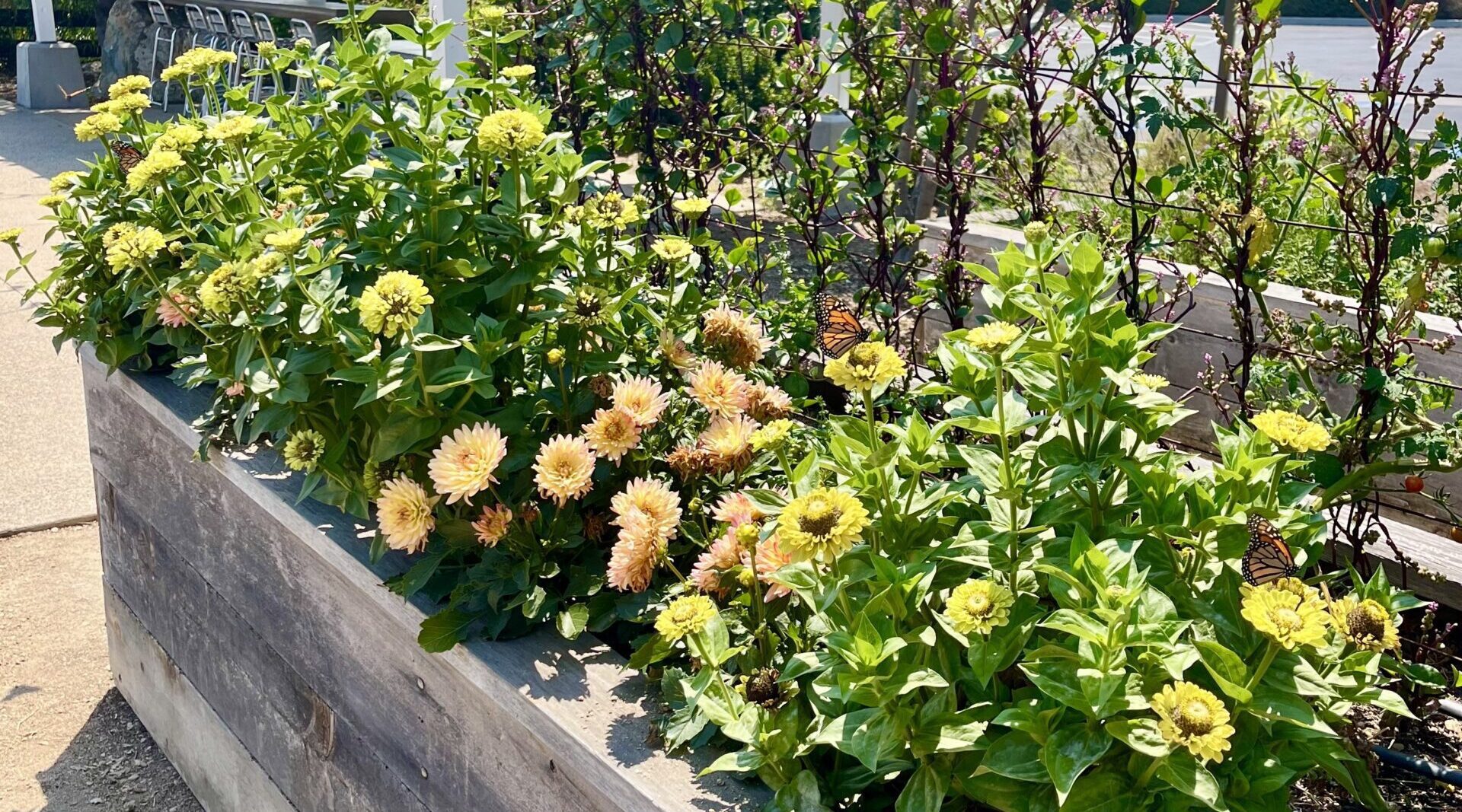
These colorful, high-impact beds are a growing favorite among clients who want to bring a little more beauty into their space (and their home). Whether it’s a seasonal refresh, an alternative to edibles, or simply something to enjoy and share, cut flowers offer more than just good looks.
Why Add a Cut Flower Garden?
A cut flower bed transforms a garden into more than a source of beauty—it becomes a source of connection, creativity, and joy. There’s something special about watching flowers grow from tiny seedlings into full blooms, then bringing that color and life indoors or sharing it with someone you love.
“Having fresh flowers inside really changes the vibe of a room,” says Taneya Parks, Farmscape’s Residential Farming Manager in Southern California, who brings a florist’s perspective to garden design. “It makes things feel more alive and intentional—and when they come from your own garden, they’re grown without chemicals, picked by hand, and arranged with care. It’s such a simple way to brighten everyday life.”
Beyond aesthetics, cut flower beds also serve practical purposes:
- Balance the harvest when clients have more produce than they need (we love this problem!)
- Keep beds full while troubleshooting critters or soil pest and disease challenges
- Provide lower-maintenance beauty for clients who want visual impact without more edible care
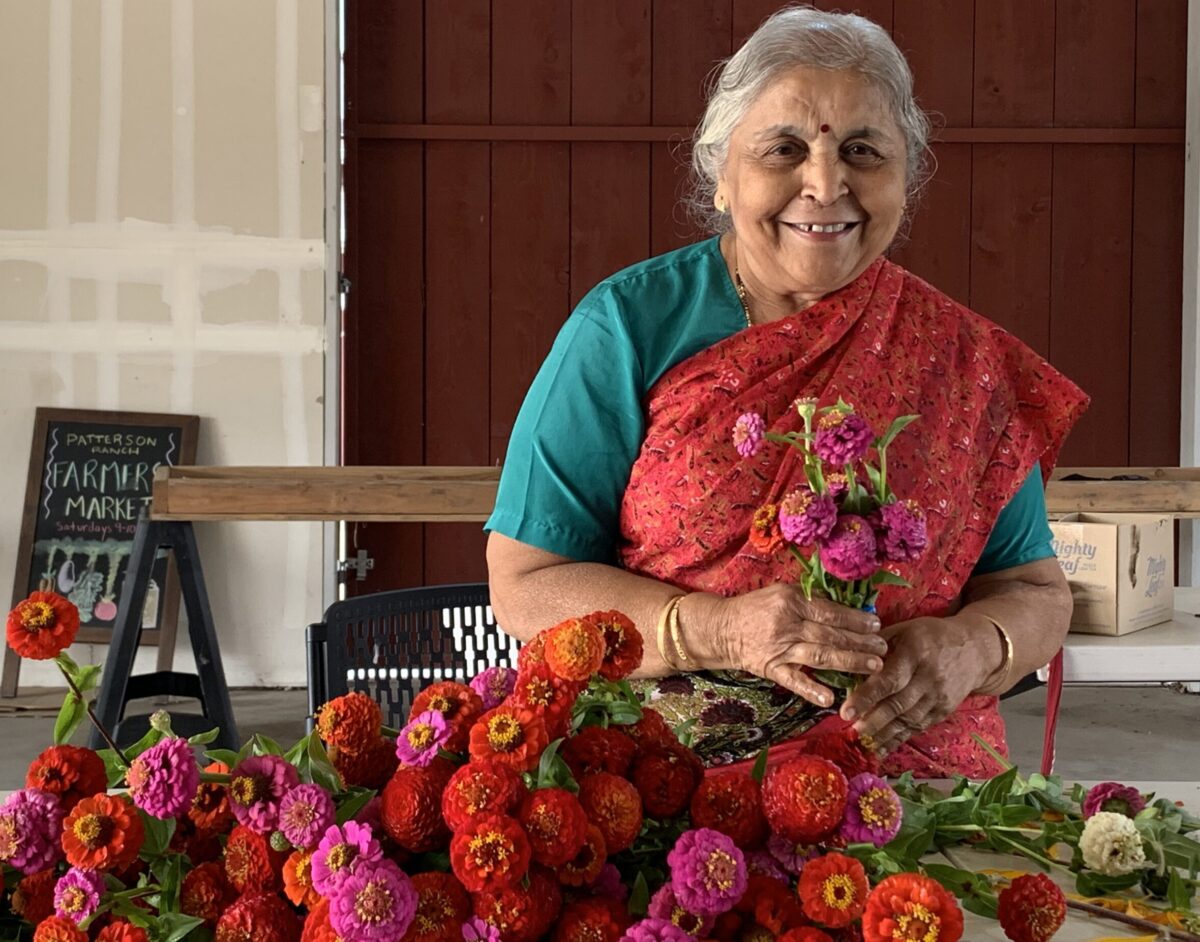
Our Approach to Designing Cut Flower Gardens
At Farmscape, we treat cut flower beds with the same care and customization as our edible beds. That means thoughtful design, strategic rotation, and a seasonal approach that ensures your garden stays lush and productive.
Here’s what we focus on:
- Timing and Rotation
- In general, we align cut flower planting with our seasonal crop plans—selecting varieties that thrive in summer or winter conditions, just like we do with vegetables.
- Color, Height, and Texture
- Our designs balance bloom times, color palettes, and structural variation. “When it comes to cut flowers, stem height helps shape how you enjoy them,” says Taneya. “We look for varieties that offer a mix—some perfect for tall vases and others that shine in low, lush bud vases or compact side-table arrangements. Even shorter stems can make a big impact indoors while still enhancing the overall garden design.”
- Trialed and Tested for Performance
- We grow many of our cut flowers from seed—both at our offices and directly in client gardens—so we can observe performance firsthand. This helps us select varieties known for reliable germination, strong stems, extended vase life, and repeat blooms.
What’s Blooming Now?
We’re currently trialing and rotating a wide mix of summer standouts across Farmscape gardens. Some of our favorite cut flower varieties include:
- Zinnias – From Cupcake to Peppermint, they’re hardy, long-lasting, and easy to grow
- Cosmos – Airy, cheerful, and great for tall, whimsical stems
- Celosia ‘Flamingo’ – Textured and sculptural with soft, feathery blooms
- Marigolds (African varieties) – Bold, long-stemmed, and vibrant
- Dahlias from seed – Big impact with surprising height and color
- Yarrow – A multicolored filler
- Peppermint Geranium – a bit of foliage to tie it all together
Want something low-effort with high reward? “Zinnias are my go-to recommendation,” says Taneya. “Even direct-seeded, they grow strong and offer tons of color, shape, and variety.”
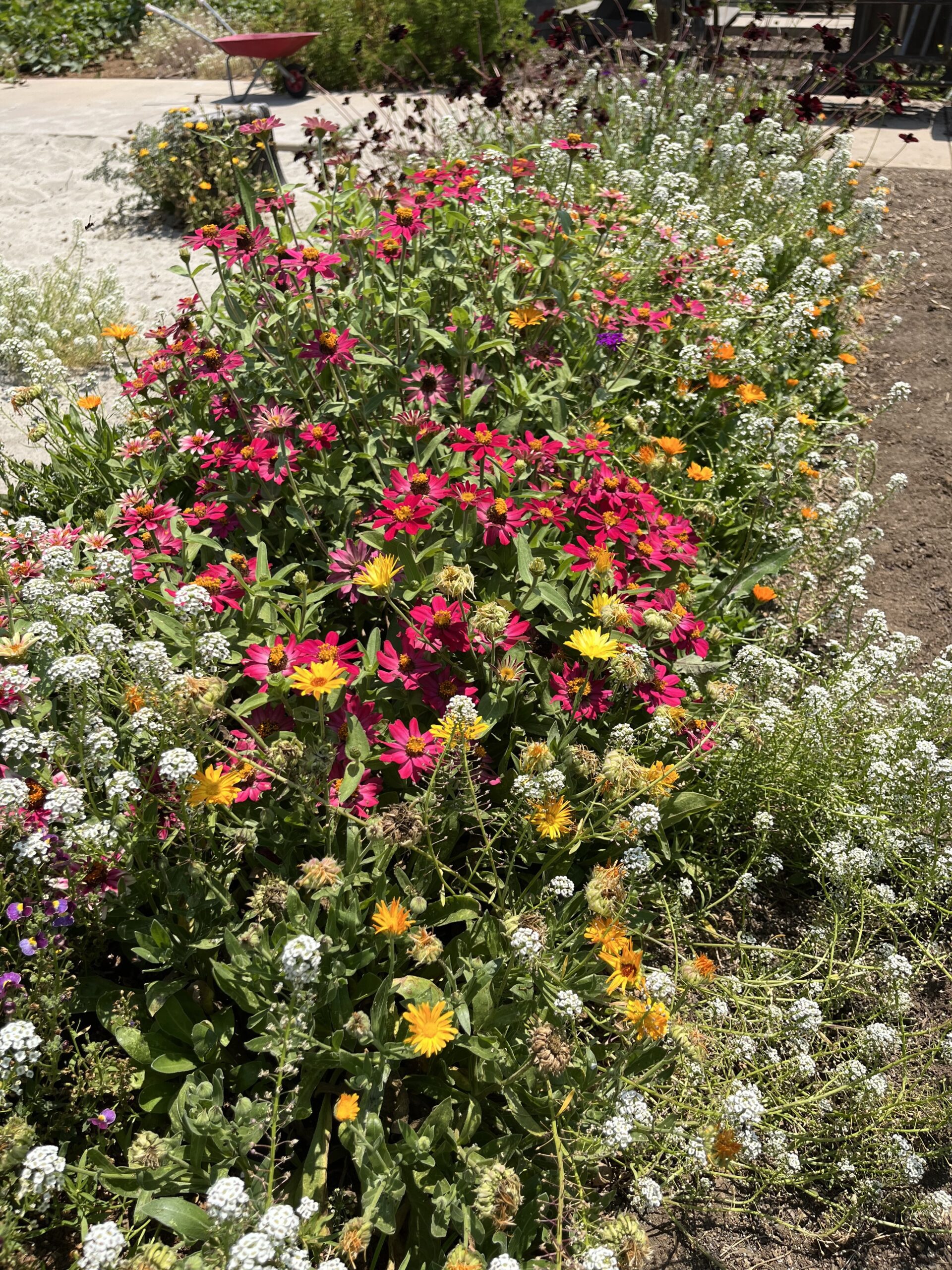
A Garden That Grows More Than Food
Cut flower beds don’t just look good—they support pollinators, balance garden production, and offer sensory delight throughout the season.
“Even clients who think they’re not flower people are often surprised how much they love them—especially once they start cutting and arranging their own.” — Taneya
Further blending her personal and professional passion, Taneya shares:
“I used dahlias, zinnias, and hanging amaranthus in my own wedding flowers. I love how those blooms come together—bright, joyful, and so full of life.” That same joy is something she now helps bring to client gardens, one flower bed at a time.

Harvesting & Arranging Tips
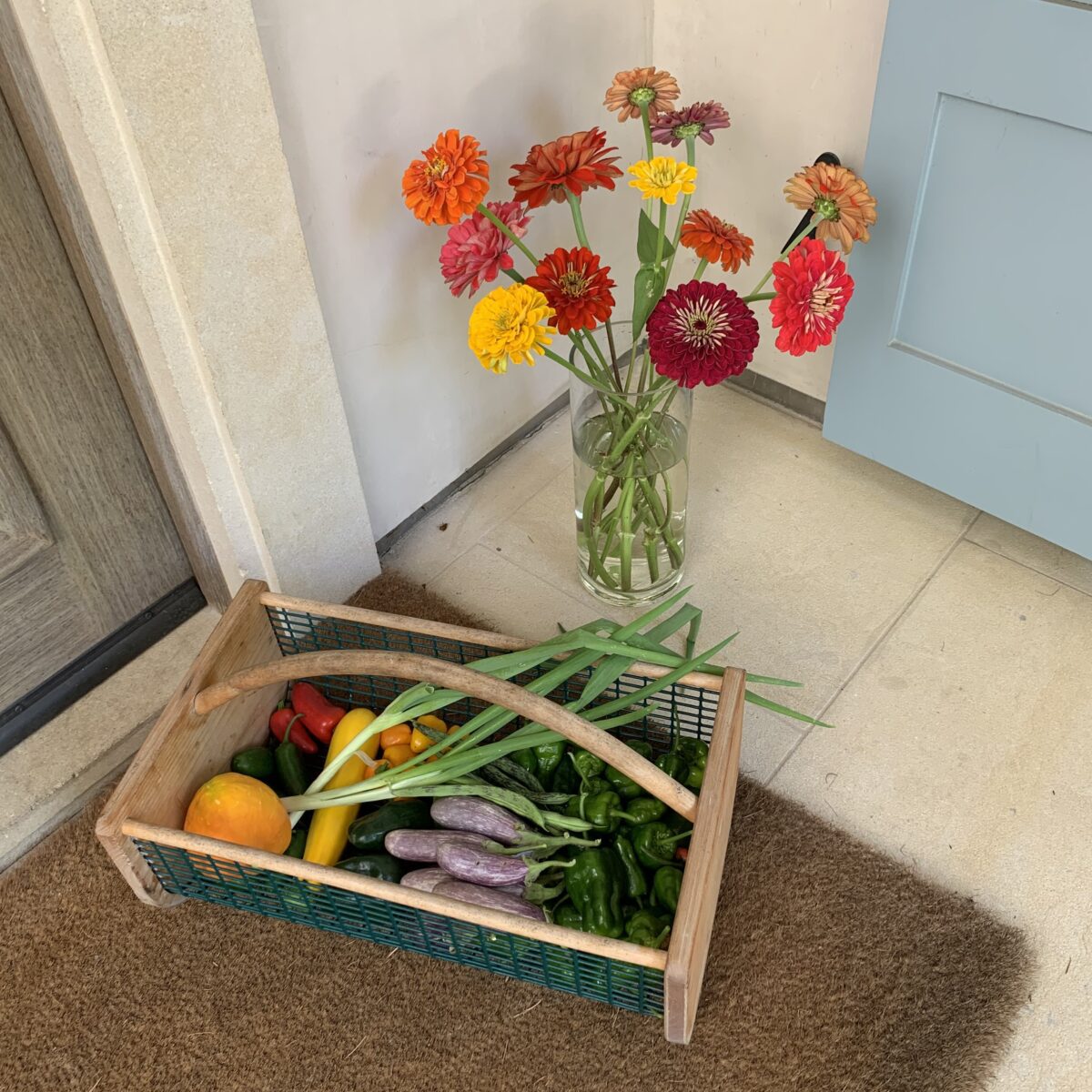
If you’re growing a cut flower bed, here are a few pro tips to keep your arrangements fresh and long-lasting:
- Cut stems at an angle to maximize water absorption
- Remove leaves below the water line to prevent rot
- Place stems in water quickly—or fully submerge wilted flowers to revive them
- Change the water every few days and give the stems a fresh cut to help your bouquets last longer
- Optional: Use a floral preservative to boost longevity
Real Gardens in Bloom
From residential backyards to large agrihoods, our cut flower beds are thriving—and bringing people together.
At Rancho Mission Viejo, we recently hosted a flower U-pick and arranging workshop led by Juliana, a trained ikebana artist and member of our Southern California team. Residents harvested seasonal blooms straight from the garden, then learned how to create elegant, intentional arrangements.
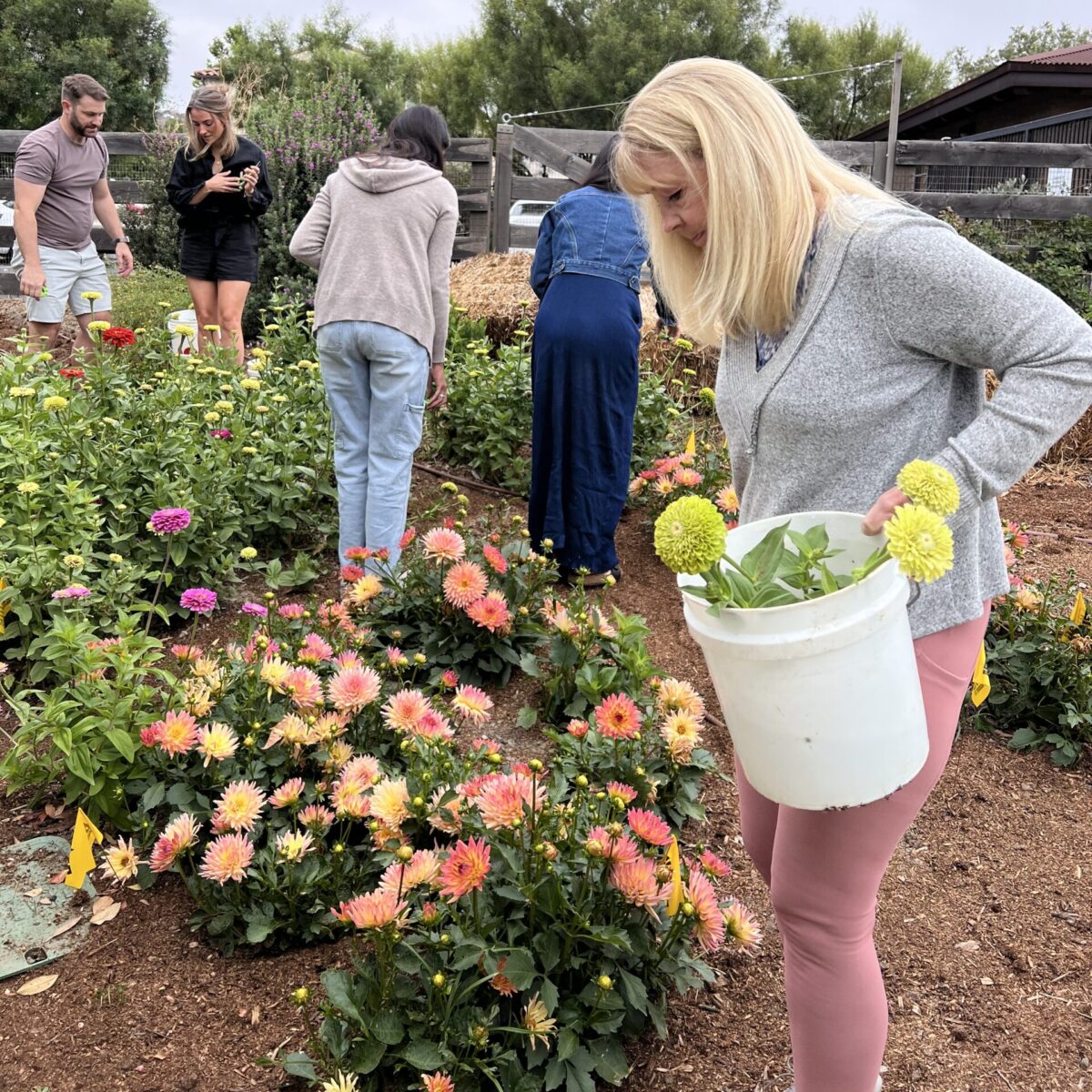
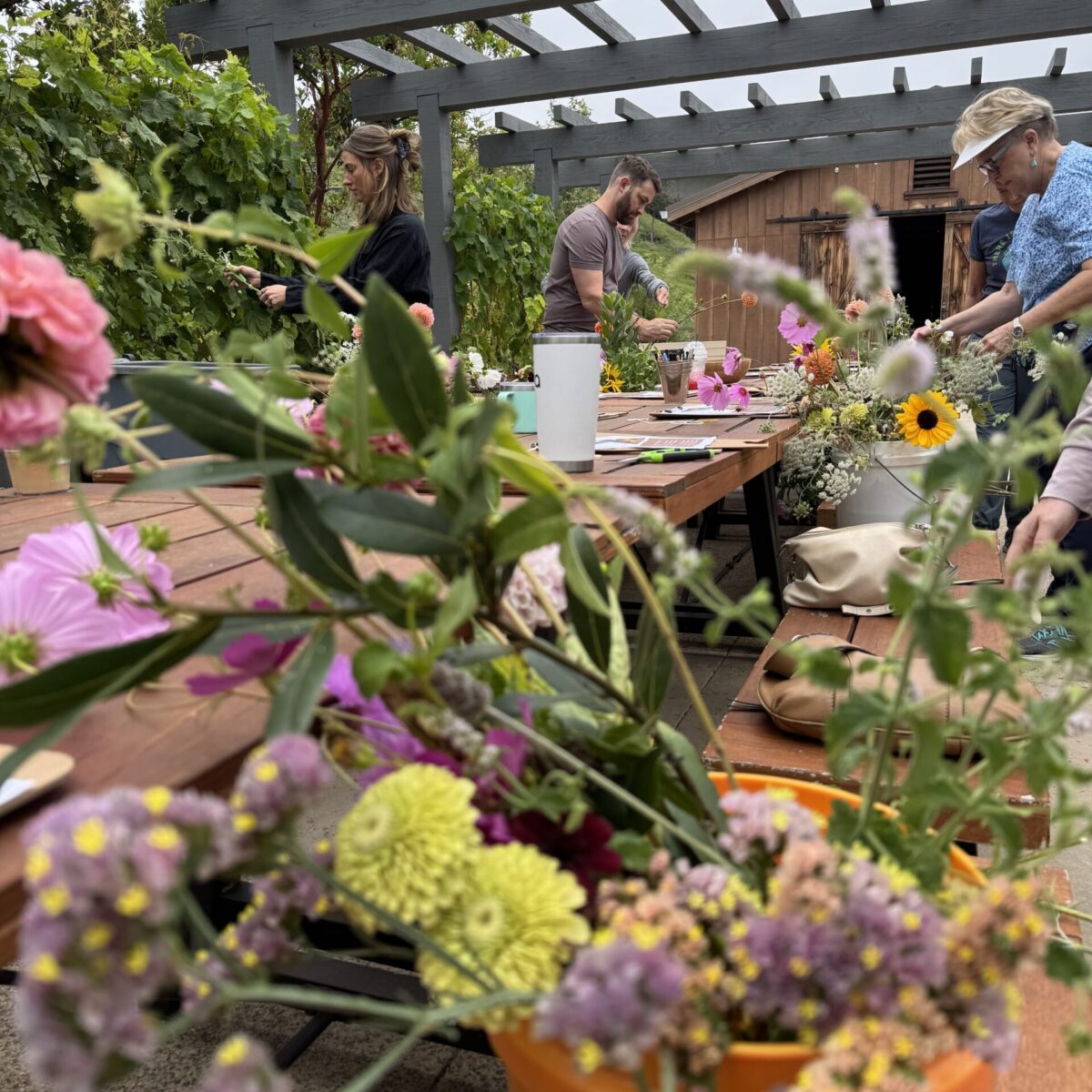
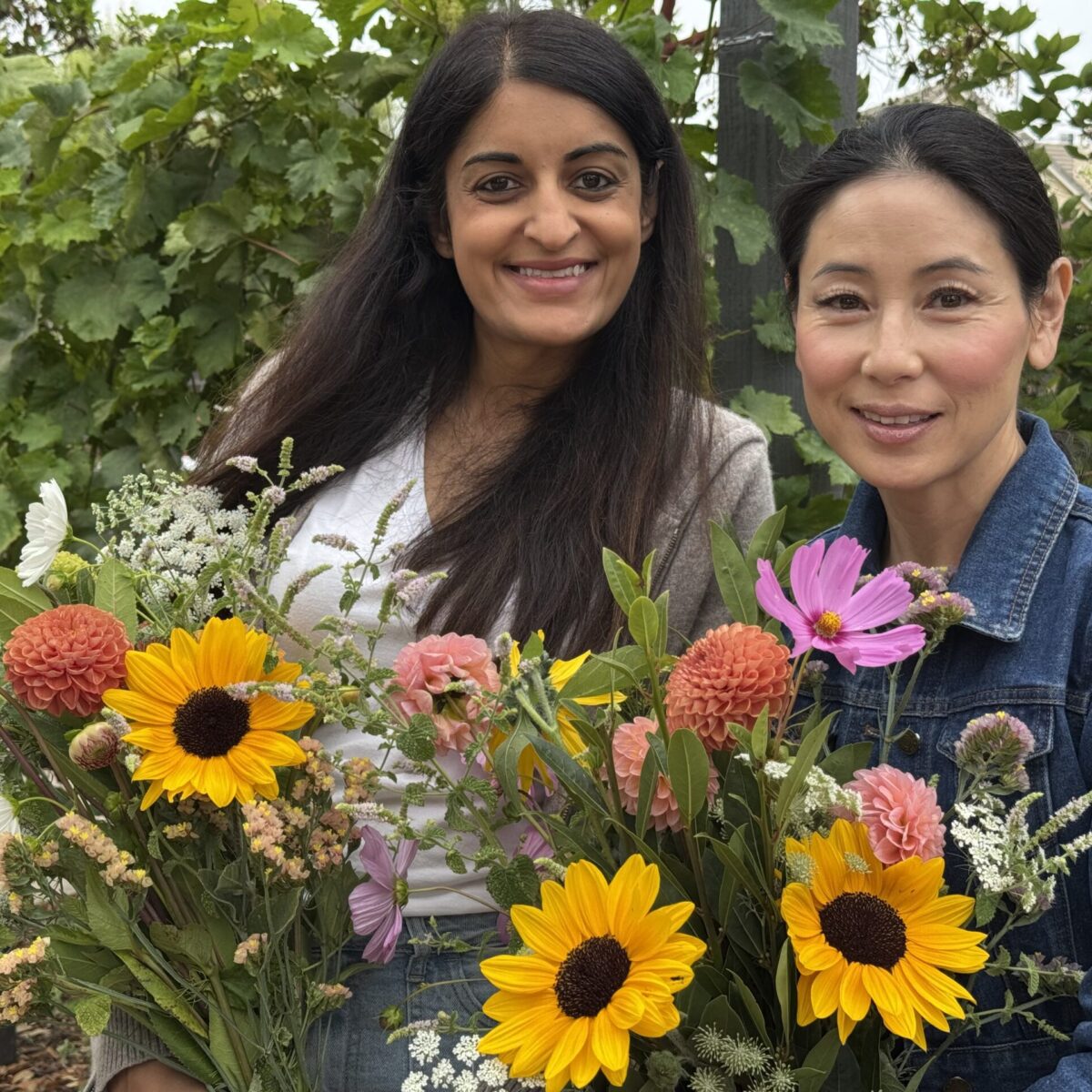
Whether you’re starting small or going big, we’ll help you design a flower-forward Farmscape that fits your space and style.
Want Flowers in Your Farmscape?
If you’ve ever dreamed of harvesting your own bouquet, now’s the time to explore what’s possible. We can:
- Design a full cut flower bed
- Mix flowers into your existing edible beds
- Recommend varieties based on your style, maintenance preferences, and season
Talk to your farmer or get in touch to learn more about adding flowers to your Farmscape.



